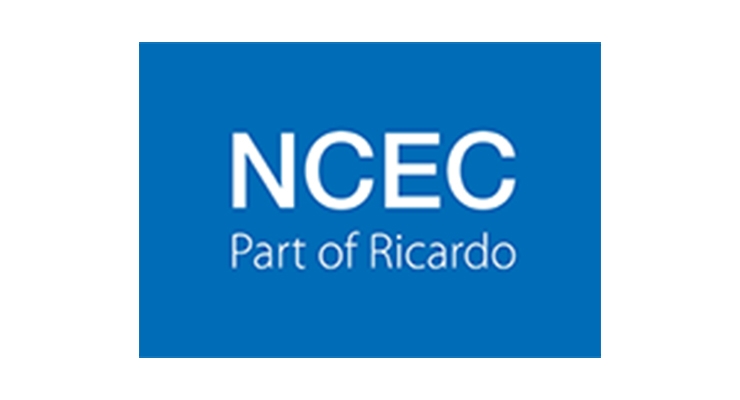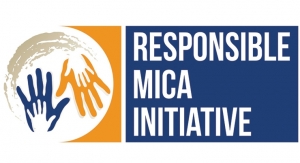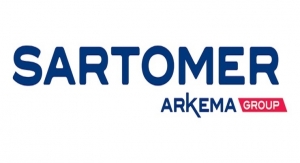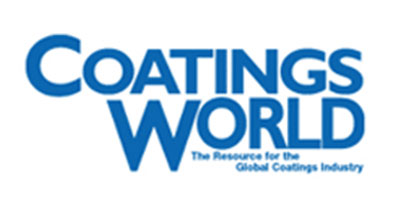Ian McDiarmid, New Business Sales Manager, National Chemical Emergency Centre06.28.19
Companies involved in the manufacture, management and distribution of chemicals should ensure their systems and processes have suitable features to support a fast and effective response intervention when the worst happens. This article looks at how the impact of an incident can be mitigated by following the latest Cefic guidelines for level 1 emergency response.
The incident
It’s raining on a Wednesday morning around 03:00 GMT and on the A1 near Paris, a fire officer has just arrived at the scene of a road traffic collision. There are no injuries to any of the drivers, but it has been reported that one of the vehicles involved – a curtain-sided lorry – is carrying dangerous goods, some of which appear to have leaked out onto the road. As a result, the road has been closed. Soon, it will be the start of the morning rush hour, with thousands of workers and tourists using the road to head into the capital. There is no way that the road can be opened with the situation as it is. The driver of the lorry produced the dangerous goods declaration (DGD) from a folio he keeps in the cab. It has a long list of chemical names and UN numbers – and there is an emergency number. When the emergency number is dialled, the caller is informed, in French, that it is a chemical emergency line and an interpreter will be connected shortly. Following this, a conversation takes place that enables the caller to resolve the incident safely, having been fully informed of the hazards posed by the release.
This is what the European Chemical Industry Council (Cefic) terms a level 1 response in the Intervention in Chemical Transport Emergencies* (ICE) guidelines ‘remote information and general advice’ The ICE guidelines also detail level 2 and level 3 responses (on-scene advice and on-scene assistance respectively).
Recently, CEFIC published new guidelines on what the ‘ideal’ level 1 emergency response provision should be. Using the above incident as a case study, we will examine how the National Chemical Emergency Centre (NCEC can help support your business and customers by providing a level 1 response service– something it has delivered for over 40 years. It is worth noting that CEFIC’s terms of levels 1, 2 and 3 refer to transport emergency numbers. However, these can be just as applicable to the emergency number provided on product safety data sheets (SDS) as required in many international regulations (including REACH Annex 2) and throughout the supply chain.
One of Cefic’s new guidelines is that the emergency number is available at all hours, every day of the year. REACH does not set a requirement for the emergency number included in the SDS to be manned for 24 hours (although other global and local regulations do). This means that if an incident occurs at 19:00, a responder at the scene of an incident may not be able to obtain advice until the next working day if only an office-hours number is provided. This can lead to a situation being tackled without a complete understanding of the risks involved leading to harm, response being delayed or slowed and costing a great deal more to the parties involved – even impacting a company’s reputation if the media is involved.
While the incident described above was happening near Paris NCEC’s emergency responder was in England working on a poison centre notification, but ready to provide an immediate level 1 response. Just after 03:00 GMT the phone on NCEC’s dedicated level 1 number rang. The emergency responder was informed that there was a French-speaking caller and interpreter on the line, and then they were patched into the call. The interpreter informed the emergency responder that the caller was a fire officer and that they were ready to begin interpreting. Over the next few minutes, it was established what products were being transported, who was responsible for the shipment and that the shipment owner was a customer of NCEC – hence the emergency call. The scale of the release was discussed and it was confirmed that no one had been exposed to the substances.
The response
The DGD showed that the dangerous goods include sodium hydroxide prills, an environmentally hazardous liquid, and aerosols. The caller was not sure what had been released, simply stating that there were some split bags and white lumps, which looked as though they were sweating. The emergency responder recognised this for what it is, sodium hydroxide. The solid is readily soluble in water and is hygroscopic, meaning it will absorb moisture from the air, hence the appearance of sweat. Sodium hydroxide is a corrosive alkali. Unlike the solution, which can be irritant at low concentrations, the prills are pure product meaning that the corrosive effect is quite severe. This hazard was relayed to the caller along with the recommendation that crews remediating the spillage should be equipped with suitable protective equipment. Butyl-rubber gloves, chemical-resistant coveralls, boots and goggles were recommended. The caller asked about breathing apparatus, but it was explained that, due to the lack of dusts or vapours, respiratory protection is not necessary, but could be considered as a precaution.
Cefic recommends that level 1 service providers have a level of operational and tactical awareness – knowing what equipment is available to a caller and what challenges they may face, such as limited operating time when using breathing apparatus, loss of dexterity in gas-tight suits or even the suitability of some equipment in potentially explosive atmospheres. NCEC’s responders take part in training where they are given a tactical appreciation of the equipment available to fire and rescue services and are trained in chemical first-aid, spillage remediation and a range of other areas – including regulatory affairs and specific incident types.
The fire officer started to formulate a plan in conjunction with NCEC’s emergency responder. Two crew members equipped with appropriate personal protective equipment approached the vehicle and began to collect the spillage into an over drum for disposal. The damaged bag of prills was unloaded and placed into containment, the rest of the load was secured and the vehicles were recovered. By this time, it had started to rain heavily and the fire officer asked if the rainwater would react with the spillage. The emergency responder assured the fire officer that this is not the case as sodium hydroxide is not water reactive – adding that it can dissolve readily in water. As a result, water around the spillage would need to be contained rather than be allowed to go to drain. The officer ordered the roadside drains to be blocked and notified the French environmental authorities so that permission to allow the product to enter the environment could be obtained.
Knowledge of chemical behaviour is key in any emergency response scenario. For example, knowing quickly – in less than 5 minutes – where and when a flammable gas might be released can be the difference between a fire or an explosive incident developing and safety. In an instance such as the above, knowing that the rainwater will be carrying large amounts of sodium hydroxide helps inform the on-scene response. Instead of allowing the water to go to drain undiluted, responders can agree on a course of action with the relevant authorities and apply controls as necessary. Here, it would most likely be washing away any contaminated water with large volumes of uncontaminated water. This level of knowledge is aided by the responders having suitable levels of technical knowledge such as a degree in chemistry or equivalent (e.g. chemical engineering, environmental protection or toxicology).
The close
The plan came together and the caller thanked the responder for the assistance and the interpreter for facilitating the conversation. The emergency responder explained that if any further help was needed, then the caller could ring the emergency line again. Before ending the call, the emergency responder took details from the caller so that the incident could be investigated by the manufacturer of the sodium hydroxide. After the call, the officer returned to his duties of overseeing the remediation. The road was partially reopened and it was hoped it would be fully reopened before rush hour.
As part of the contract with NCEC, the manufacturer had stated that it wanted to be made aware immediately of any incidents involving its products that were significant in scale and involved the emergency services. To enable this to happen, NCEC had been given details of the correct person to contact, their telephone number and their language capabilities. In this case, the contact was based in France and spoke English. NCEC’s emergency responder called the designated person and relayed the incident details and actions that had been taken. The contact was satisfied that there would be no further harm caused by the incident. The manufacturer was aware of which of its clients the shipment was meant for and could begin coordinating a response. The contact asked for the information that had been given to be sent via email, which the responder agreed to do. In 4 minutes, the contact was briefed and thanked the responder for the assistance given. The email was prepared and sent, and the responder returned to doing the poison centre notifications.
Chemicals will always present a hazard and incidents will always be a reality of operating within the chemical industry. However, with an expert level 1 response available at all times, these incidents can be responded to quickly and safely to ensure minimum harm. This was a large-scale incident, but the right response is just as important when a child takes a sip of pesticide, a worker mixes two products by accident or a chemical warehouse is involved in a fire.
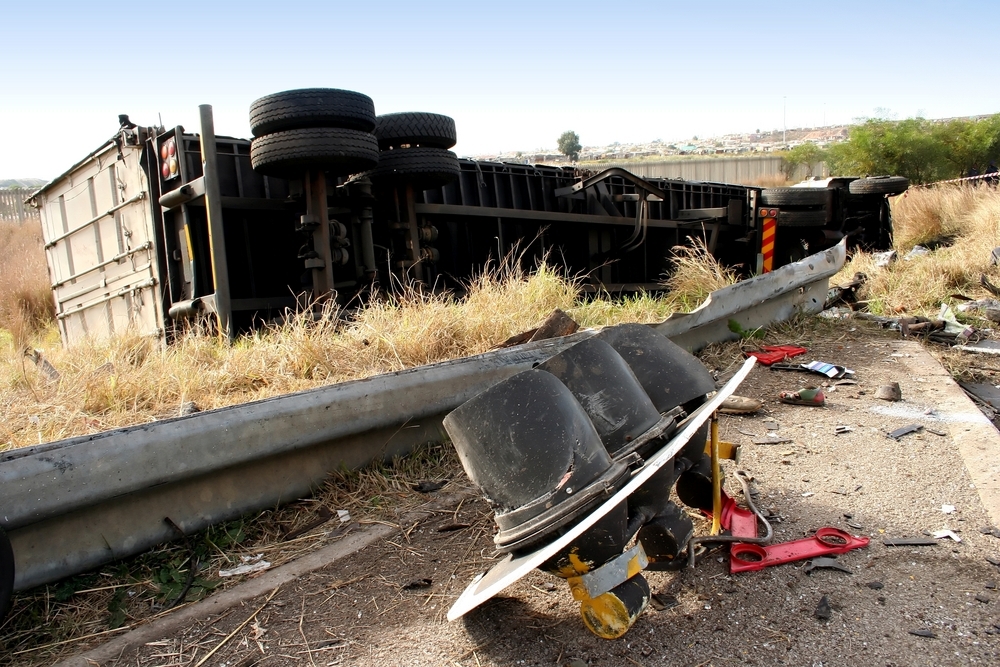
Take some time to consider if your company could handle this situation with one of your products in all of the markets in which you operate.
NCEC’s full breakdown of the new Cefic guidance can be found here.
Take some time to consider if your company could handle this situation with one of your products in all of the markets in which you operate. If you think your arrangements could be improved or if you would like to investigate what an improvement might look like, then please contact the author at Ian.j.McDiarmid@ricardo.com or call at +44 1235 75 3108.
* ICE (Intervention in Chemical Transport Emergencies) is a cooperative programme between chemical companies to prevent chemical transport incidents and to respond effectively if and when they do occur. NCEC serves as the UK’s central point of contact for the scheme.
The incident
It’s raining on a Wednesday morning around 03:00 GMT and on the A1 near Paris, a fire officer has just arrived at the scene of a road traffic collision. There are no injuries to any of the drivers, but it has been reported that one of the vehicles involved – a curtain-sided lorry – is carrying dangerous goods, some of which appear to have leaked out onto the road. As a result, the road has been closed. Soon, it will be the start of the morning rush hour, with thousands of workers and tourists using the road to head into the capital. There is no way that the road can be opened with the situation as it is. The driver of the lorry produced the dangerous goods declaration (DGD) from a folio he keeps in the cab. It has a long list of chemical names and UN numbers – and there is an emergency number. When the emergency number is dialled, the caller is informed, in French, that it is a chemical emergency line and an interpreter will be connected shortly. Following this, a conversation takes place that enables the caller to resolve the incident safely, having been fully informed of the hazards posed by the release.
This is what the European Chemical Industry Council (Cefic) terms a level 1 response in the Intervention in Chemical Transport Emergencies* (ICE) guidelines ‘remote information and general advice’ The ICE guidelines also detail level 2 and level 3 responses (on-scene advice and on-scene assistance respectively).
Recently, CEFIC published new guidelines on what the ‘ideal’ level 1 emergency response provision should be. Using the above incident as a case study, we will examine how the National Chemical Emergency Centre (NCEC can help support your business and customers by providing a level 1 response service– something it has delivered for over 40 years. It is worth noting that CEFIC’s terms of levels 1, 2 and 3 refer to transport emergency numbers. However, these can be just as applicable to the emergency number provided on product safety data sheets (SDS) as required in many international regulations (including REACH Annex 2) and throughout the supply chain.
One of Cefic’s new guidelines is that the emergency number is available at all hours, every day of the year. REACH does not set a requirement for the emergency number included in the SDS to be manned for 24 hours (although other global and local regulations do). This means that if an incident occurs at 19:00, a responder at the scene of an incident may not be able to obtain advice until the next working day if only an office-hours number is provided. This can lead to a situation being tackled without a complete understanding of the risks involved leading to harm, response being delayed or slowed and costing a great deal more to the parties involved – even impacting a company’s reputation if the media is involved.
While the incident described above was happening near Paris NCEC’s emergency responder was in England working on a poison centre notification, but ready to provide an immediate level 1 response. Just after 03:00 GMT the phone on NCEC’s dedicated level 1 number rang. The emergency responder was informed that there was a French-speaking caller and interpreter on the line, and then they were patched into the call. The interpreter informed the emergency responder that the caller was a fire officer and that they were ready to begin interpreting. Over the next few minutes, it was established what products were being transported, who was responsible for the shipment and that the shipment owner was a customer of NCEC – hence the emergency call. The scale of the release was discussed and it was confirmed that no one had been exposed to the substances.
The response
The DGD showed that the dangerous goods include sodium hydroxide prills, an environmentally hazardous liquid, and aerosols. The caller was not sure what had been released, simply stating that there were some split bags and white lumps, which looked as though they were sweating. The emergency responder recognised this for what it is, sodium hydroxide. The solid is readily soluble in water and is hygroscopic, meaning it will absorb moisture from the air, hence the appearance of sweat. Sodium hydroxide is a corrosive alkali. Unlike the solution, which can be irritant at low concentrations, the prills are pure product meaning that the corrosive effect is quite severe. This hazard was relayed to the caller along with the recommendation that crews remediating the spillage should be equipped with suitable protective equipment. Butyl-rubber gloves, chemical-resistant coveralls, boots and goggles were recommended. The caller asked about breathing apparatus, but it was explained that, due to the lack of dusts or vapours, respiratory protection is not necessary, but could be considered as a precaution.
Cefic recommends that level 1 service providers have a level of operational and tactical awareness – knowing what equipment is available to a caller and what challenges they may face, such as limited operating time when using breathing apparatus, loss of dexterity in gas-tight suits or even the suitability of some equipment in potentially explosive atmospheres. NCEC’s responders take part in training where they are given a tactical appreciation of the equipment available to fire and rescue services and are trained in chemical first-aid, spillage remediation and a range of other areas – including regulatory affairs and specific incident types.
The fire officer started to formulate a plan in conjunction with NCEC’s emergency responder. Two crew members equipped with appropriate personal protective equipment approached the vehicle and began to collect the spillage into an over drum for disposal. The damaged bag of prills was unloaded and placed into containment, the rest of the load was secured and the vehicles were recovered. By this time, it had started to rain heavily and the fire officer asked if the rainwater would react with the spillage. The emergency responder assured the fire officer that this is not the case as sodium hydroxide is not water reactive – adding that it can dissolve readily in water. As a result, water around the spillage would need to be contained rather than be allowed to go to drain. The officer ordered the roadside drains to be blocked and notified the French environmental authorities so that permission to allow the product to enter the environment could be obtained.
Knowledge of chemical behaviour is key in any emergency response scenario. For example, knowing quickly – in less than 5 minutes – where and when a flammable gas might be released can be the difference between a fire or an explosive incident developing and safety. In an instance such as the above, knowing that the rainwater will be carrying large amounts of sodium hydroxide helps inform the on-scene response. Instead of allowing the water to go to drain undiluted, responders can agree on a course of action with the relevant authorities and apply controls as necessary. Here, it would most likely be washing away any contaminated water with large volumes of uncontaminated water. This level of knowledge is aided by the responders having suitable levels of technical knowledge such as a degree in chemistry or equivalent (e.g. chemical engineering, environmental protection or toxicology).
The close
The plan came together and the caller thanked the responder for the assistance and the interpreter for facilitating the conversation. The emergency responder explained that if any further help was needed, then the caller could ring the emergency line again. Before ending the call, the emergency responder took details from the caller so that the incident could be investigated by the manufacturer of the sodium hydroxide. After the call, the officer returned to his duties of overseeing the remediation. The road was partially reopened and it was hoped it would be fully reopened before rush hour.
As part of the contract with NCEC, the manufacturer had stated that it wanted to be made aware immediately of any incidents involving its products that were significant in scale and involved the emergency services. To enable this to happen, NCEC had been given details of the correct person to contact, their telephone number and their language capabilities. In this case, the contact was based in France and spoke English. NCEC’s emergency responder called the designated person and relayed the incident details and actions that had been taken. The contact was satisfied that there would be no further harm caused by the incident. The manufacturer was aware of which of its clients the shipment was meant for and could begin coordinating a response. The contact asked for the information that had been given to be sent via email, which the responder agreed to do. In 4 minutes, the contact was briefed and thanked the responder for the assistance given. The email was prepared and sent, and the responder returned to doing the poison centre notifications.
Chemicals will always present a hazard and incidents will always be a reality of operating within the chemical industry. However, with an expert level 1 response available at all times, these incidents can be responded to quickly and safely to ensure minimum harm. This was a large-scale incident, but the right response is just as important when a child takes a sip of pesticide, a worker mixes two products by accident or a chemical warehouse is involved in a fire.

Take some time to consider if your company could handle this situation with one of your products in all of the markets in which you operate.
NCEC’s full breakdown of the new Cefic guidance can be found here.
Take some time to consider if your company could handle this situation with one of your products in all of the markets in which you operate. If you think your arrangements could be improved or if you would like to investigate what an improvement might look like, then please contact the author at Ian.j.McDiarmid@ricardo.com or call at +44 1235 75 3108.
* ICE (Intervention in Chemical Transport Emergencies) is a cooperative programme between chemical companies to prevent chemical transport incidents and to respond effectively if and when they do occur. NCEC serves as the UK’s central point of contact for the scheme.

